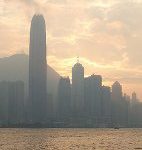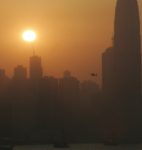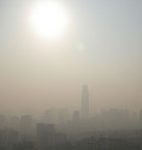“A great city; except for the pollution.” It’s an increasingly common summary of Hong Kong. A financial hub known for its modern infrastructure, towering buildings and fast-paced lifestyle, the city is now attracting a less desirable label. A forecast by the Economist recently highlighted air pollution as a key cause for concern in Hong Kong’s future development. Last year alone, air pollution caused 1,155 premature deaths and an extra 7 million doctor visits, costing the city over HK$2.3 billion (US$297 million).
Cleaning up air pollution is not only an environmental problem, but also an economic and public health issue. Globalisation continues to draw countries closer together and integrates our financial markets. The world’s best minds have greater choice on where to take their talents, and while Hong Kong remains one of the world’s top destinations in this regard, its status is built on increasingly shaky ground.
In a recent survey, one in every five people in Hong Kong said they were considering leaving the city because of the air pollution. One in 10 was either seriously considering leaving or already in the process of leaving. Most worrisome is that the people in this group are the most educated and highest income earners. As Hong Kong’s environmental health affects its economic health, similar financial centres, such as Singapore, are capitalising on the brain drain by emphasising their cleaner environments as a comparative advantage.
Having established that cleaning up the air will benefit the economy, how do we achieve this? In Hong Kong, it is easy to point a finger toward the Pearl River Delta (PRD) on the Chinese mainland. Emissions from manufacturing in the PRD leaves a significant footprint on the city’s air quality, but only focusing on this point misses the full picture. Of the total number of polluted days in Hong Kong, local pollutants were the dominant source over half of the time. Furthermore, the pollutants that do the most damage to people’s health are those from roadside and marine sources, which are both locally generated. This means Hong Kong’s own pollutants are the main culprit and that addressing pollution and reforming local regulations and Air Quality Objectives will make a significant difference.
However, a gap exists between the dangers of Hong Kong’s pollution and public awareness of the problem. The public policy think-tank Civic Exchange has worked with the University of Hong Kong to bridge this divide with the development of the Hedley Environmental Index, the world’s first website to quantify the monetary and public health costs of air pollution in real-time. Named after professor Anthony Hedley of the Hong Kong University School of Public Health, the site uses a peer-reviewed, internationally accepted model to calculate the concrete costs of unsafe air. One goal of the Index is to show the public that air pollution’s effects extend beyond just environmental health and that these costs are tangible.
In just the first two months of 2009, the Hedley Environmental Index shows that air pollution lost Hong Kong HK$350 million and produced an extra one million visits to the doctor. Moreover, these are conservative figures, which count only lost productivity and short-term health costs. The Index does not yet account for the impact of air pollution on factors as lost tourism or long-term health burdens.
Missing in this picture is a hard and enforceable standard to curb pollution. As the unsafe air continues to bear down on Hong Kong, the city needs to search for more challenging markers to lower pollutant levels. Hong Kong’s current Air Quality Objectives are up to four times weaker than the World Health Organisation (WHO) standards; however, even with softer objectives, actual levels of pollution often exceed safe levels.
The 2005 WHO Air Quality Guidelines can provide the starting point for this discussion, but unfortunately, their only mention by Hong Kong’s leaders has been in the context of implementing WHO’s Interim Target 1 (IT1). While IT1 bears the WHO brand, it was designed for developing cities to get them on the path to lowering pollutants. Hong Kong is clearly not a developing city.
The path forward may present different options for solutions, but it is clear that now is the time to act. The Hong Kong AQOs are heavily outdated, but they are currently under review for the first time since their inception over 20 years ago. The development of the Hedley Environmental Index allows government, civic groups and citizens to track improvements in air quality and see the monetary and public health benefits that reform can bring. The government has begun to reduce emissions from the largest source of air pollution by ordering the installation of flue-gas desulphurisation equipment on all coal-fired power stations by 2011. This is a step in the right direction, but it remains to be seen how it will address critical issues in the future, such as promoting green transport.
Hong Kong has traditionally been China’s most dynamic city, at the cutting edge of economic development and a leader in introducing international best practice to China. Yet, in air quality management the city lags far behind other world cities. As one of Asia’s premier financial centres, we need to ask what air pollution is really costing us.
Eric Cheng is a recent graduate from the University of California, Berkeley. He now works with Civic Exchange.
Luo Rui, a postgraduate student at Peking University’s Institute of Environmental Science and Engineering, who has previously worked at Civic Exchange, contributed to this article.
Visit the Hedley Environmental Index here
Homepage photo by Ljubisa Bojic



